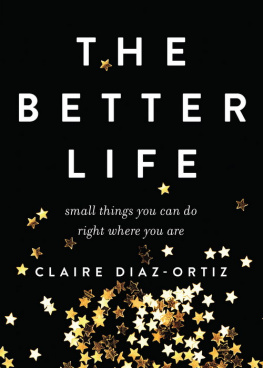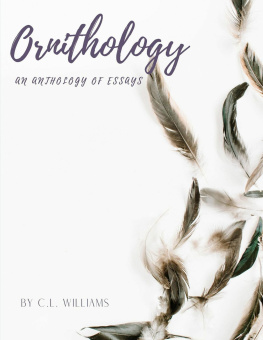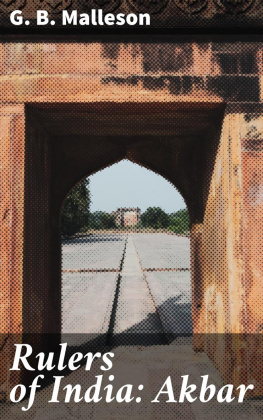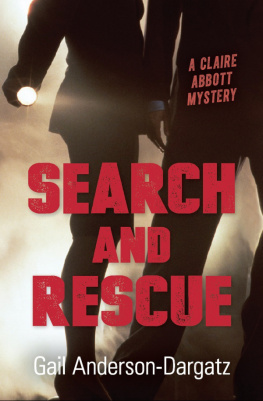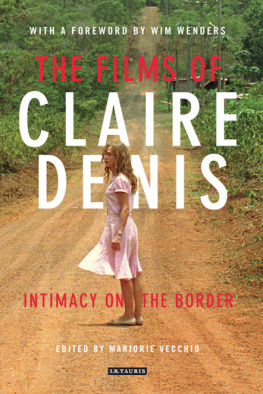THE FAYUM
LANDSCAPE
THE FAYUM
LANDSCAPE
Ten Thousand Years
of Archaeology, Texts,
and Traditions in Egypt
CLAIRE J. MALLESON
The American University in Cairo Press
Cairo New York
This electronic edition published in 2019
The American University in Cairo Press
113 Sharia Kasr el Aini, Cairo, Egypt
420 Fifth Avenue, New York, NY 10018
www.aucpress.com
Copyright 2019 by Claire J. Malleson
All rights reserved. No part of this publication may be reproduced, stored in a retrieval system, or transmitted in any form or by any means, electronic, mechanical, photocopying, recording, or otherwise, without the prior written permission of the publisher.
ISBN 978 977 416 883 3
eISBN 978 1 61797 946 0
Version 1
For my parents
Contents
Black-and-White Figures
1. Google Earth image showing the Fayum in Egypt. 3
2. Google Earth image of Lahun area. 51
3. Google Earth image of Kahun town. 52
4. Google Earth image of Biahmu. 56
5. Seated statue of Rameses II at Kiman Faris (Crocodilopolis), 1980. 59
6. Remains of the temple of Sobek at Kiman Faris (Crocodilopolis),1980. 60
7. Google Earth image of Madinat Madi. 61
8. Google Earth image of Hawara. 62
9. Google Earth image of Madinat al-Gurob. 75
10. Map of Greco-Roman towns in the Fayum. 113
11. Google Earth image of Tebtunis. 115
12. Google Earth image of Bacchias. 116
13. Google Earth image of Dimai. 117
14. The temple and enclosure walls, Dimai. 118
15. Google Earth image of Qasr Qarun. 119
16. Google Earth image of Theadelphia. 120
17. Google Earth image of Karanis. 141
18. Lucas graffiti in Qasr Qarun. 201
Color Plates
Between pages 130 and 131:
1. Google Earth images of the Fayum, 1996, 2006, 2016.
2. GIS Elevation map of Fayum.
3. Google Earth map of principal Fayum sites.
4. Block from Hawara, Petrie Museum UC14794.
5. Map of the northern Fayum lake basins.
6. Fragments of inscription from Giza Mastaba G2150, Ka-nefer.
7. Kahun town.
8. Biahmu Pedestal, 2006.
9. Hawara Pyramid, 2006.
10. Fragments of the Fayum Papyrus, Walters Art Museum, Baltimore.
11. Fragments of the Fayum Papyrus, Pierpont Morgan Library.
12. The Lahun dike, 2017.
13. Qasr Qarun temple.
14. The Ptolemaic temple at Madinat Madi.
15. The dromos at Madinat Madi.
16. Fayum portrait, Petrie Museum UC19609.
17. Fayum portrait, Petrie Museum UC19613.
18. Google Earth map of locations mentioned by European travelers.
19. Fishing boats on Birkat Qarun, 2006.
20. Crimson sunset over Birkat Qarun, 2006.
21. Postcard of painting by Jean-Lon Grme, Madinat al-Fayum, 1868.
A great number of people supported me in this project, both during my PhD studies and while I was revising the text. I would particularly like to thank Nigel Fletcher-Jones and Neil Hewison from the American University in Cairo Press, who not only suggested they might like to publish my thesis but also provided invaluable advice, feedback, and encouragement. My PhD supervisors Steven Snape and Matthew Fitzjohn and my examiners Chris Eyre and Marco Zecchi offered many wise words and posed very helpful, difficult questions. Campbell Price, Cordula Werschkun, and Peter M. Robinson were endlessly supportive while I was preparing my PhD, as were my friends and colleagues in the School of Archaeology, Classics and Egyptology and the libraries at the University of Liverpool. My colleagues in the Department of History and Archaeology in the American University of Beirut have not only made me feel enormously welcome, but have also provided some crucial advice on parts of this book. Since 2007 I have worked with many archaeological missions in the United Kingdom and Egypt, and I owe a lot to the teams at Sedgeford Historical and Archaeological Research Project, Chester Amphitheatre, Giza (Ancient Egypt Research Associates), Tell al-Retaba, Elephantine (Deutsches Archologisches Institut), Madinat al-Gurob, and Sais. My friends and family have known me at my best and my worst during this process, and I owe a great deal to Daniel Lawson, Pier Paolo Raffa, to my five brothers and a million sisters who keep me smiling, to my five children Rory, Benjamin, James, Amelia, and Robert, to my brother Tom, and to Emma and Niki. Many colleagues, friends, and family have read various drafts of this study as it progressed, and I am exceptionally grateful to everyone who offered their time and advice so generously, especially Ruth Binney and Marco Zecchi. Last, but certainly not least, I want to thank the people who first inspired me to do Egyptology and Archaeology: Mark Lehner, Jos Prez-Accino, Jan Picton, Mick Oakey, Keith Hazell, Naomi Payne, Neil Faulkner, and Patricia Graham.
Chronology up to end of Roman Period based on Shaw (2000) unless noted otherwise (dates are approximate up to 664 bc ).
| Palaeolithic | 700,0007000 bp |
| Fayum Epipalaeolithic Cultural Phase (Qarunian) | 75306090 bc |
| Early Fayum Neolithic Cultural Phase (Fayumian) | 54804260 |
| Late Fayum Neolithic Cultural Phase (Moerian) | 46203640 |
| Lower Egyptian Neolithic and Egyptian Predynastic Period | 53003000 |
| Early Dynastic Period (FirstSecond Dynasty) | 30002686 |
| Old Kingdom (ThirdEighth Dynasty) | 26862160 |
| First Intermediate Period (NinthTenth Dynasty) | 21602055 |
| Middle Kingdom (EleventhThirteenth Dynasty) | 20551650 |
| Second Intermediate Period (FourteenthSeventeenth Dynasty) | 16501550 |
| New Kingdom (EighteenthTwentieth Dynasty) | 15501069 |
| Amarna Period | 13521327 |
| Ramesside Period | 12951069 |
| Third Intermediate Period (Twenty-firstTwenty-fifth Dynasty) | 1069664 |
| Late Period (Twenty-sixthThirtieth Dynasty) | 664332 |
| Ptolemaic Period | 33230 |
| Macedonian Dynasty | 332310 |
| Ptolemaic Dynasty | 30530 |
| Roman Period | 30 bc ad 395 |
| Late Antique/Byzantine/Coptic Period | ad 395642 |
| Ummayads | 661750 |
| Abbasids | 750868 |
| Tulunids | 868905 |
| Ikhshidids | 93569 |
| Fatimids | 9691171 |
| Ayyubids | 11691250 |
| Mamluks | 12501517 |
| Ottomans | 15171867 |
| Muhammed Ali Pasha | 180548 |
| Khedival/Royal Egypt | 18671953 |
| Republic of Egypt | 1953Today |
This province is the most remarkable and interesting of all the provinces of Egypt.
Major R.H. Brown (1892)
Other visitors... have also written in praise of the Fayoum, as a true earthly paradise, the garden of Egypt, paradise of the desert. The stress has always been on the fertility and beauty of the landby no means the only attraction of the Fayum to the modern visitor, but surely attraction enough, especially after the concrete desert of Cairo.
R.N. Hewison (2008)
F or millennia the Fayum has been viewed as somehow different from the rest of Egypt. Not part of the Nile Valley but not remote enough to be considered one of the Western Desert oases, the Fayum has many unique aspects to it. The amazing qualities attributed to the region by Herodotus, the father of history, in the fifth century bc were a source of fascination for later Classical scholars such as Pliny and Strabo, and attracted the first European pilgrims and explorers to the Fayum. The ideas they developed about the region, particularly those relating to Biblical events, became popular topics of debate in early Egyptology. The Fayum was the site of some of the earliest organized archaeological investigations in Egypt, by the British father of Egyptian archaeology, Sir William Matthew Flinders Petrie, in the late nineteenth and early twentieth centuries. Amazingly rich discoveries of well-preserved Ptolemaic and Roman administrative and literary papyri, and life-like portraits found on Roman mummies in the region (known as the Fayum Portraits), meant that the Fayum became a major focus of attention for scholars studying those periods of Egyptian history. The Fayum is also home to some of the oldest archaeological remains discovered in Egypt. Around the shores of the lake, major Palaeolithic and Neolithic sites were noted during the early years of formal archaeology in Egypt, and have been under serious investigation since the mid-twentieth century.



